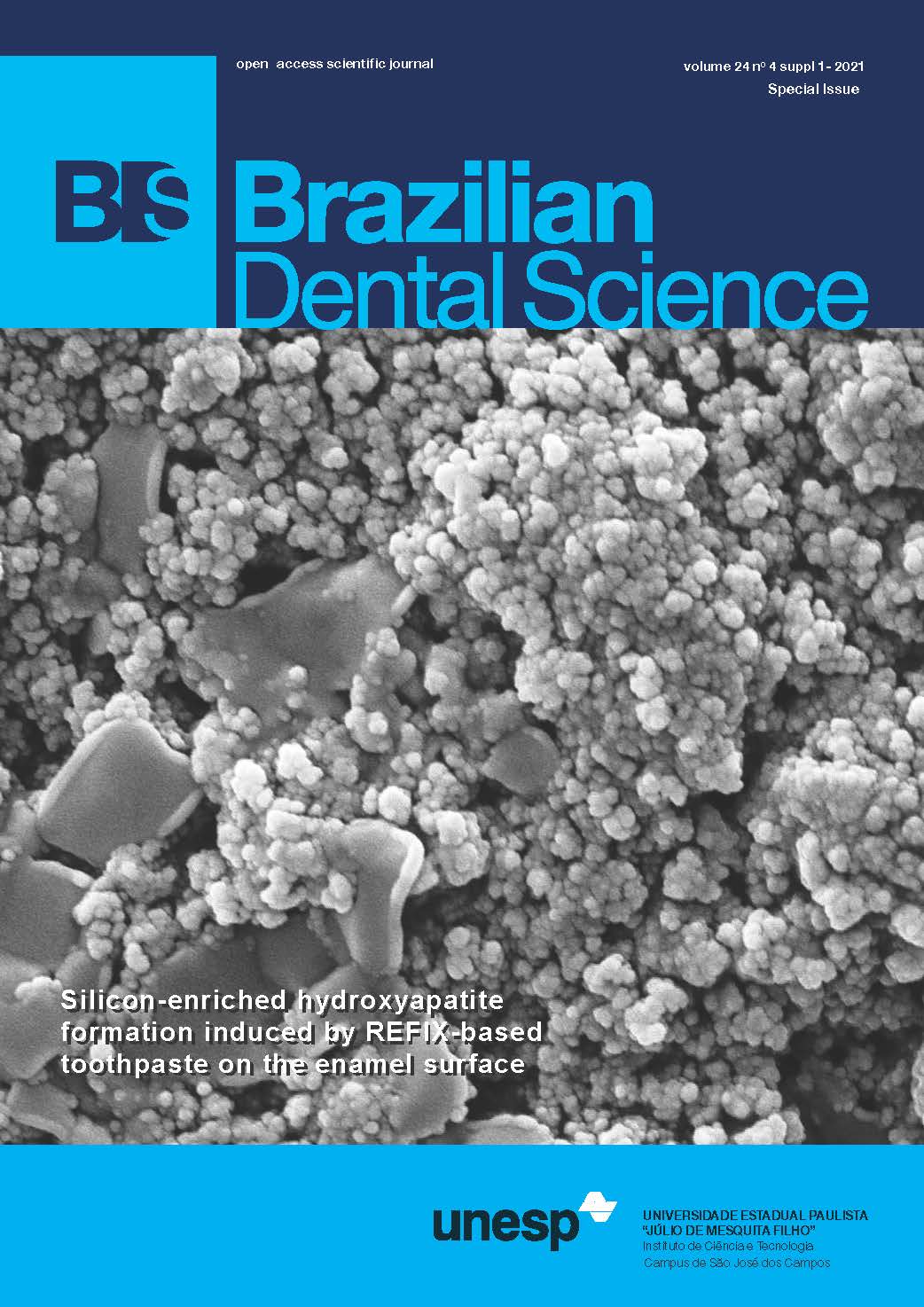Assessing the Level and Diagnostic Accuracy of Osteopontin and Oral Health Status in Periodontitis Patients with/without Type-2 Diabetes Mellitus
DOI:
https://doi.org/10.4322/bds.2021.e2968Resumen
Objective: Periodontitis is a multifactorial inflammatory disease usually terminated with tooth loss when untreated. Type-2 diabetes mellitus (T2DM) have shown to exacerbate periodontitis. Osteopontin, is thought to play a role to induce periodontitis-associated bone resorption. Aim was to investigate the osteopontin level in gingival crevicular fluid of patients affected by periodontitis with or without T2DM, and to explore the potential of osteopontin to differentiate between periodontal health and disease. Patients and Methods: A total number of 36 subjects seeking periodontal treatment were recruited in this pilot study. Plaque index, gingival index and probing pocket depth were examined, and the osteopontin level was measured in the GCF and analysed using Enzyme-linked immunosorbent assay. Results: Plaque index and gingival index were significantly higher in T2DM with periodontitis compared to periodontitis and control groups. Both periodontitis groups showed significant increase in the osteopontin levels (p<0.001) compared to control. probing pocket depth showed the only significant positive association with osteopontin (p<0.001) compared to other clinical parameters. The ROC curve analysis showed that osteopontin had higher AUC value (AUC: 0.95) in periodontitis compared to P-T2DM patients (AUC: 0.86). Conclusions: In both periodontitis groups, clinical parameters were equally deteriorated together with significant increase in the expression of osteopontin compared to control. Further, GCF-levels of osteopontin were sensitive and specific enough to discriminate between health and periodontitis even with T2DM. This could have an impact on osteopontin to be used as a diagnostic biomarker of periodontal disease.
Descargas
Descargas
Publicado
Versiones
- 2022-01-03 (2)
- 2022-01-03 (1)
Cómo citar
Número
Sección
Licencia
Brazilian Dental Science uses the Creative Commons (CC-BY 4.0) license, thus preserving the integrity of articles in an open access environment. The journal allows the author to retain publishing rights without restrictions.
=================
COPYRIGHT TRANSFER AND RESPONSIBILITY STATEMENT
(PDF)
For all articles published in the BDS journal, copyright is retained by the authors. Articles are licensed under an open-access Creative Commons CC BY 4.0 license, meaning that anyone may download and read the paper for free. In addition, the article may be reused and quoted, provided that the original published version is cited. These conditions allow for maximum use and exposure of the work while ensuring that the authors receive proper credit. All metadata associated with published articles is released under the Creative Commons CC0 Universal Public Domain Dedication.
Before the submission, authors must obtain permission to reproduce any published material (figures, schemes, tables, or any extract of a text) that does not fall into the public domain or for which they do not hold the copyright. Permission should be requested by the authors from the copyright holder (usually the Publisher, please refer to the imprint of the individual publications to identify the copyright holder).
The authors hereby attest that the study is original and does not present manipulated data, fraud, or plagiarism. All names listed made a significant scientific contribution to the study, are aware of the presented data, and agree with the final version of the manuscript. They assume complete responsibility for the ethical aspects of the study.
This text must be printed and signed by all authors. The scanned version should be submitted as supplemental file during the submission process.























